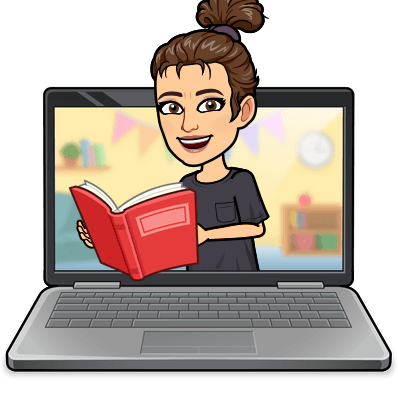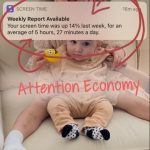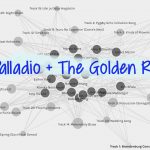preamble
This week’s readings and videos took a closer look at the future of AI and what could, or could not, be the reality of our not so distant future. I won’t lie, I was happy to hear Vallor (2018) make the distinction between narrow AI and AGI, I was beginning to think we were closer to having a reality with “machines intelligence that would be like ours” (2:50). I also like how she pointed out that AI was really an accelerate. This metaphor started my thinking about the narratives- how can the data from our online patterns and networks become accelerated? Her second point about AI as a mirror, I began to think again, how could our data become a “distorted reflection”.
What really got me thinking was the podcast, “The Future of Digital literacies” where Corbette Doyle discussed ethics and AI. She shares her concern over some of the problems that could arise. She defends: “AI is based on an the analysis of the past” and she goes on to say how she struggles with the ethics of having students leaving a “digital footprint” by completing her assignments in class.
Two things intersect for me here– the past as being the future of AI, and what this footprint might solidify for the future.
The Interlude
The following two speculative narratives are told from the perspective of a teacher in the future where schools have been restructured. These schools have been constructed based on the digital footprint of students, basically a snapshot of their lives at one point in the past essentially their first digital footprints.
NaRRATIVE #1 – Dystopia (mode- videoscribe)
I wanted to employ a multimodal approach to tell this story:
Narrative #2 Utopia (mode: WRITTEN text)
The colours fill my room with a murky glow
Today is pink.
I immediately hear my own voice echo through the speakers, “your vitals are strong, heart rate steady and your map is ready for you. Footstep 13 report to the Center for Dialogue”
After a quick steam (another water shortage) I gear up. Triple layers, gloves, and of course- the utility bag. Vitamin pills and a glass of bark milk then I am out the door and down to transit.
I guess I should provide a little background. Well, my title has changed through the years- first my title was “high school teacher” and now it is “Footstep Lead.” If there is one thing I miss, it is my classroom, but weirdly enough, giving it all up has been the most fulfilling feeling as an educator.
This big change came 10 years ago, students essentially revolted. You see, they were following the rules making their way through grade school and on to university with top grades. But The Great Job Scarcity hit the generation hard. There was a complete disregard for what analysts and scholars were telling us. Education needed to change to satisfy the economic demands of the future, but no one listened.
Students felt they were misguided; their counsellors and teachers did not understand their desires or needs. Essentially, they were coerced by the structure to follow unsuccessful and unprofitable futures. They were jobless and knew their younger siblings were going to meet the same fate. Like all great change, this too was preceded by chaos, and The Great Walkout occurred in 2050.
The Great Walkout was led by Isla Knowitall, a young student from Ireland. She came from a small, isolated community, where teachers, students, government workers, economists, and ‘algomasters’ created an educational system that involved student input and a framework for all students to leave school with a path outlined for them.
Isla thought this framework could extend to the entire world- with the help of the web and all the platforms that students were engaged in.
Isla had an idea, since so much of what students share about themselves takes place online, why not collect this data and create a Footprint, a kind of map for future identity? This Footprint could place students in groups with schools and teachers that support their individual and collective needs?
Isla was not naïve- she knew how AI worked, how biases existed online, how students were in many ways guided through ‘likes’. So, she flipped the idea around. She asked student to participate in an activity, for one month.
I quote here: “Our phones know us better than any teacher I have come in contact with- they can guide me to location, link me to my friends and families, lead me to pertinent information, etc”
“Students of the world I ask you to start today, to actively and consciously create your own digital footprint- ONE that reflects who you think YOU want to be in the future. We encourage you to create a digital portfolio of all your interests and desires.”
This call to action ignited students around the world and the data rolled in, and with the help of AI, the acting amplifier and mirror, each student was classified. Educators and scholars were able to look at the real data and how AI grouped the students, and a new system was born.
The mass undertaking took place. Scholars, leading minds in digital literacy, alogomasters, began to restructure schooling. Essentially, they looked at the Footsteps these students had created with in their digital networks. Soon enough patterns began to emerge, and footsteps were created, and students became linked with those who fit into their algo pattern, Mind you-geography played a bit of a role- but essentially students were grouped by their digital footprints- what they had left on the web, so essentially a picture of what they wanted their future to look like.
——————————————————————————————————————–
I approach the brick building (I believe this use to be a high school a one point). I open the double doors and am hit with the heat from the fireplace in the corner. The group looks cheerful. 5 students (this was the number students felt was appropriate for classroom success).
“Hello everyone, I am Footstep 13 and it’s great to meet you”. I am met with 5 joyful looks- something I didn’t see often in the old system.
“We are so pumped” a small girl with a top knot speaks up. I quickly reply, “ditto”
“Alright, class- We are in your Third Footstep, Social Justice, I am excited to begin hearing your thoughts on Climate Justice”
I continue, “We will be meeting with government official and the economist next week with our data, so we need to get the jump on”
Students hurriedly pull out their devices and open their collective site. Footstep 13 begins dialoguing, collecting data, yelling at each other in real time, debating, downloading and uploading statistics- all collaboration all with humans and computers.
The energy is remarkable- You see this Footstep, these groups of students- spent a month after The Great Walkout consciously creating their identity, their footprint. They did this to hopefully get grouped with like minds and like interests- and guess what, it worked.
I sit back and watch the energy, I do nothing but guide and scaffold questions- all the learning takes place at the hands of the students.
Finally, the tall boy in the back asks the question I have been waiting for, “Hey ‘teach, you were a student in the old system—is there anything you miss??”
I take a moment and grin; I pull out the utility bag and ask the class to huddle around.
“Great question, Nico. Welcome to my utility bag.”
Inside the bag I pull out an old vinyl record player and a couple of vinyl’s. I find a source of power in the room and begin playing the classics, there is dead silence.
“This is so cool! I didn’t know these still existed! But wait, what does this have to do with the old system?”
“Well, team, it is a reminder- I used to play music in class while students would work- mind you, there was nearly 30 of you at a time- but music seemed to be the connecting force in the room, I helped forge a bit of an identity. And that’s what I sometimes miss, real artifacts. SO much of our time is dedicated to the future and how to progress that we forget the highlights of the past”
I can tell this resonates with the class. Parts of the past that are good? How?
Suddenly the large double doors open.
“Alright everyone, that’s enough for the day.” I thought today was Pink and the Ears weren’t working as well, but alas, I was wrong.
“Ms. Alves, we heard your discussion- and we wanted to take this opportunity to thank you! This was a great lesson for the class” I feel a bit apprehensive, but everyone seems delighted. “We are wondering if we could borrow this record player for the next class?”
I immediately say yes, but something tells me I won’t be seeing my record player anymore. Nonetheless- I got my moment today and the students learned more in that moment then they had all Footstep.
afterthought
Chapter 5 in Speculative Everything spoke about the utopian and dystopian narrative that we come in contact through film and media. The idea that a utopian future could bring about a perfectly equitable society full of rainbows and sunshine, is really an impossible dream. Mainly because happiness is subjective, and a slew of other more complex issues. But the utopian/dystopian premise is alluring. As Dunne and Raby defend, “The idea of utopia is far more interesting when used as a stimulus to keep idealism alive, not as something to try to make real but as a reminder of the possibility of alternatives” (73). My two speculative narrative might be categorized into dystopian/utopian category, but what is more important from these examples is how the human mind can create a new world with possibilities that solely came from imagination. Imagination and design can play back to the way AI can amplify our human condition. Maybe AI can accelerate our best traits; creativity.
References
Dunne, A. & Raby, F. (2013). Speculative Everything: Design, Fiction, and Social Dreaming. Cambridge: The MIT Press.
Leading Lines: a podcast on educational technology. The Future of Digital Literacies. (episode 60). https://soundcloud.com/leadinglines/episode-060-future-of-digital-literacies-faculty-panel
Vallor, Shannon. (2018, November 6). Lessons from the AI Mirror Shannon Vallor. YouTube. https://www.youtube.com/watch?v=40UbpSoYN4k&t=8s



